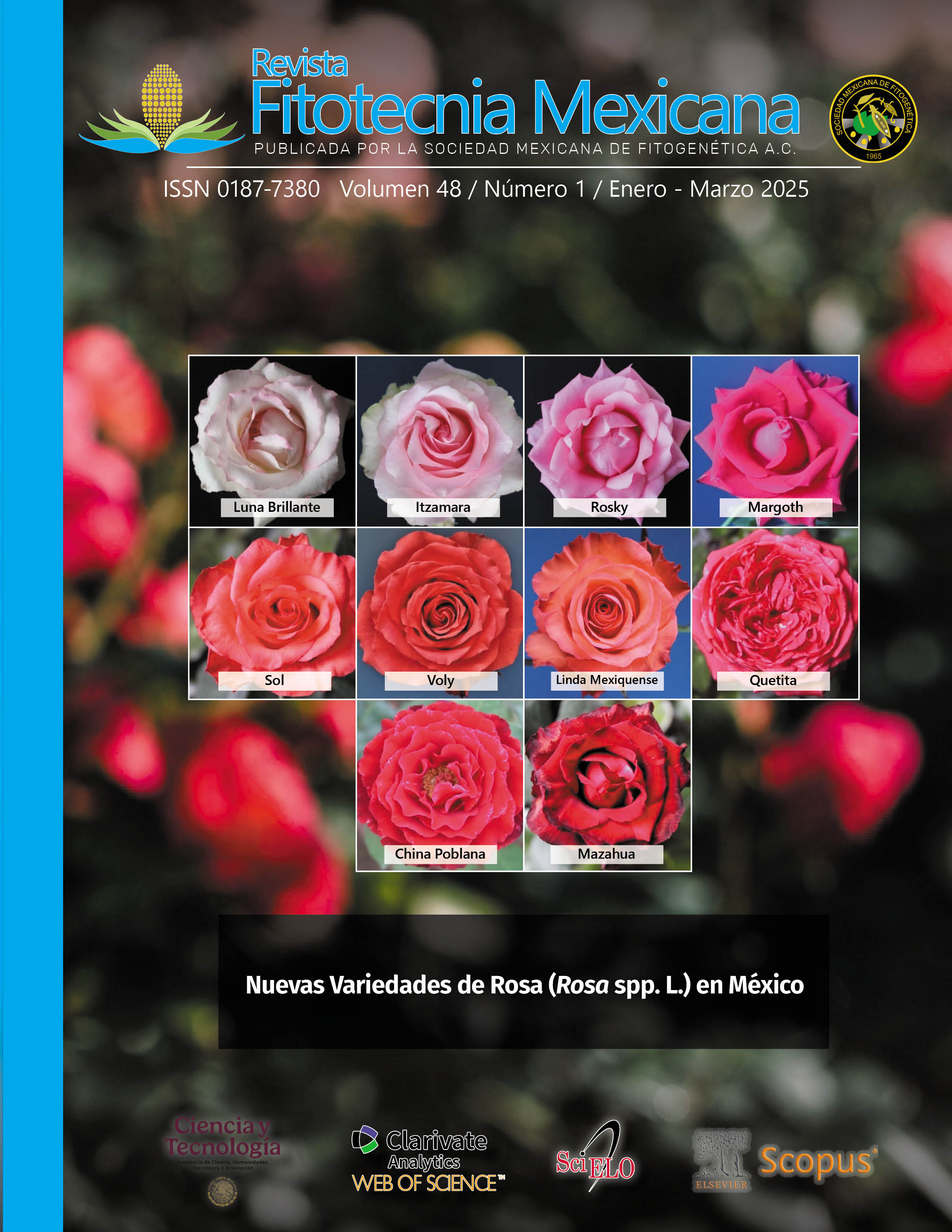FAMILY SELECTION WITHIN SIX NATIVE MAIZE VARIETIES
Main Article Content
Abstract
with yield potential and desirable traits that can be incorporated into genetic improvement have been identified. The objectives of this study were to estimate the response to selection in grain yield, days to flowering and prolificacy of six native maize varieties after two cycles of family selection, and to describe the ear and grain traits. The study consisted of the evaluation of six native varieties in their original (O) and improved (M) versions, four of those (JAG, CHAP, MTA and MTB) adapted to the transition-highland area, and two (PT14R and PT14C) from intermediate areas, in two locations. The original varieties were subjected to one self-family selection cycle and another of full-sib selection cycle. Information was obtained on days to male flowering (FM), prolificacy (PRO), grain yield (REND), ear length (LMAZ), ear (DMAZ) and cob (DOLO) diameter, number of kernel rows (HIL), kernels per row (GHIL), the grain-ear ratio (DESG), the length (LG), width (AG) and thickness (EG) of the kernel. In the selection variants (O vs M), differences (P ≤ 0.01) were found only in REND, FM, and KL. In REND, an average response of 1.63 t ha-1 (18.2 %) was obtained for the six varieties, with variation between 8.0 and 37.4 % per selection cycle. In FM, an average reduction of 3 d was obtained, with significant values between 3 and 5 d in the varieties, except for PT14R, MTB and JAG where the maturity remained similar to the original versions. The ear and kernel traits allowed to describe the varieties under study, which remained unchanged after selection. The improved varieties PT14C and PT14R were identified with outstanding yield potential across environments.

